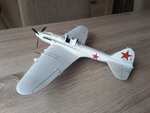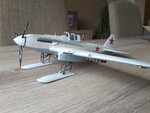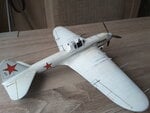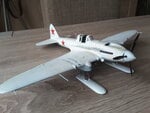Ron Pearcy
Airman 1st Class
I've built this and the Tamiya version when I got back into modelling a couple of years ago. Both kits are excellent with nothing difficult in the build. The skis on this version are tricky because it's not clear from the instructions where the struts actually fit. Internet research solved this issue. The whitewash finish gave me confidence to try a bit of weathering. I used brown pastels to create muddy staining on the wings and black for the exhaust.
Please constructively criticise.


Please constructively criticise.




